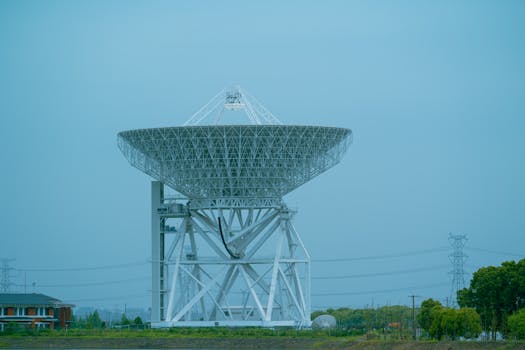
Satellite Telecommunications 2023: What’s New and What’s Next? Satellite Telecommunications
The satellite telecommunications industry is rapidly evolving, with new technologies and innovations emerging in 2023. Satellite Telecommunications has become an essential part of modern communication, enabling global connectivity and facilitating the exchange of information across the globe. In this article, we will delve into the latest developments and future trends in the field of Satellite Telecommunications.
The year 2023 has seen significant advancements in satellite technology, with the launch of new satellite constellations and the development of more efficient and powerful satellites. One of the most notable trends in the industry is the increasing use of low-earth orbit (LEO) satellites, which offer faster and more reliable communication services. LEO satellites are being used for a range of applications, including broadband internet, mobile connectivity, and Earth observation.
Advancements in Satellite Technology
Another area of advancement in satellite technology is the development of new propulsion systems. Traditional satellite propulsion systems rely on chemical fuels, which are heavy and inefficient. However, new propulsion systems, such as electric propulsion and advanced ion engines, are being developed, which offer greater efficiency and longer mission durations. These new propulsion systems will enable satellites to operate for longer periods and to travel farther distances, expanding the reach of satellite telecommunications.
In addition to advancements in satellite technology, there are also new developments in the field of ground equipment. Phased array antennas and other advanced ground equipment are being developed, which will enable faster and more reliable communication with satellites. These advancements will improve the overall performance and efficiency of satellite telecommunications systems, enabling faster data transfer rates and more reliable connectivity.
Future Trends in Satellite Telecommunications
Looking ahead to the future, there are several trends that are expected to shape the satellite telecommunications industry. One of the most significant trends is the increasing use of satellite-based connectivity for IoT (Internet of Things) applications. As the number of connected devices grows, there will be a greater need for reliable and efficient connectivity, which satellite telecommunications can provide. Satellite-based connectivity will also play a critical role in enabling the development of smart cities and other IoT-enabled infrastructure.
Another trend that is expected to impact the satellite telecommunications industry is the growing demand for high-speed and low-latency connectivity. As the use of cloud computing and other high-bandwidth applications grows, there will be a greater need for fast and reliable connectivity. Satellite telecommunications will play a critical role in meeting this demand, with the development of new satellite constellations and the use of advanced technologies, such as laser communication and quantum encryption.
Conclusion
In conclusion, the satellite telecommunications industry is rapidly evolving, with new technologies and innovations emerging in 2023. Satellite Telecommunications has become an essential part of modern communication, enabling global connectivity and facilitating the exchange of information across the globe. As the industry continues to evolve, we can expect to see significant advancements in satellite technology, ground equipment, and the development of new applications and services. Whether you are an individual, business, or organization, it is essential to stay informed about the latest developments in the field of Satellite Telecommunications and to explore the many benefits that it has to offer.




